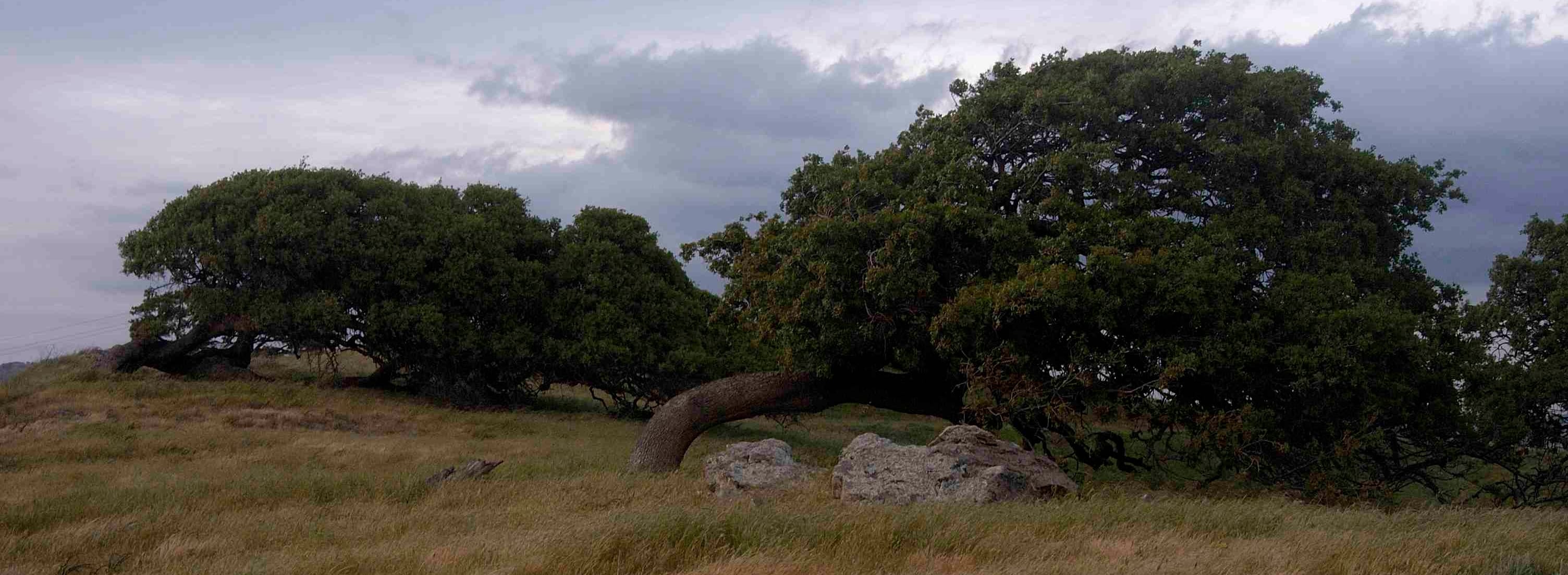
About the Ancient Blue Oak Woodlands of California
In a state famous for remarkable forests, the blue oak woodlands must be included among the most exceptional. Blue oak woodlands are a mosaic of forest and savanna on the foothills of the Coast Ranges and Sierra Nevada, encircling the Central Valley of California. These beautiful woodlands are one of the largest ecosystems in California, but they are imperiled by agricultural development, suburbanization, and by the apparent decline in natural regeneration. Many of the remaining blue oak woodlands were never systematically logged and still contain canopy-dominant individuals that are 150- to over 600-years old. Our extensive field research and tree-ring dating indicates that literally thousands of acres of old-growth blue oak (Quercus douglasii) survive on private and public land. In fact, the remaining blue oak woodlands may be one of the most extensive old-growth forest types left in California. These ancient woodlands contribute to watershed protection and preserve an important component of the eroding biodiversity of California. The annual growth rings of these exceptional old age blue oak trees also provide a sensitive chronology of drought and wetness over California that has helped place the modern anthropogenic era of heavy water demand and climate change into the context of natural climate variability over the past 600 years.
